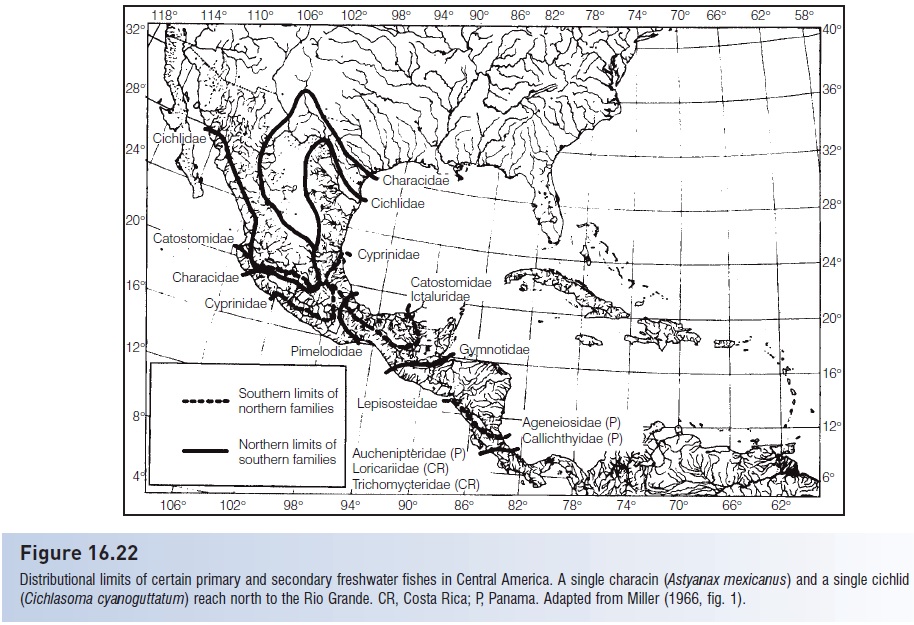Chapter: The Diversity of Fishes: Biology, Evolution, and Ecology: Zoogeography
Middle American freshwater fishes
Middle American freshwater fishes
The freshwater fish faunas of North and South America are very different. Minnows, suckers, ictalurid catfishes, darters, and sunfishes predominate in the north, whereas cichlids, characins, gymnotoids, and a wide array of different catfish families are common in the south. What happens in the region between North and South America, in Middle America?
Middle America acts partly as a filter barrier slowing the movement of North American fishes south and South American fishes north, thus allowing invasion by marine groups. A few representatives of North American families such as Ictaluridae, Catostomidae, and Lepisosteus extend south to Costa Rica (Fig. 16.22). A few representatives of South American families such as Cichlidae (Cichlasoma) and Characidae (Astyanax) extend north to the Rio Grande. Of the approximately 456 species of freshwater fishes in Central America, over 75% comprise secondary freshwater fishes such as Cyprinodontidae, Poeciliidae, Cichlidae, and marine invaders, and only 104 species are primary freshwater fishes (Miller 1966).
The general pattern of contributions from both major regions and of many secondary freshwater fishes also holds for more localized faunas in the region. For example, the Usumacinta Province, comprising the Grijalva and Usumacinta rivers of Guatemala and Mexico, contains a mix of North American and South American fishes totaling over 200 species (Miller 1966). Two secondary groups, the cyprinodontoids and the cichlids, comprise about 90 species. There are also a large number of marine derivatives (18 species in nine families). Among these are a few endemics, including species from three marine families, Belonidae (Strongylura hubbsi), Hemiramphidae (Hyporhamphus mexicanus), and Batrachoididae (Batrachoides goldmani). Freshwater species of these three families occur elsewhere, but what factors have led to this remarkable parallel derivation of endemic freshwater species? Part of the explanation is due to the depauperate nature of the primary freshwater fishes of the region, but this is true of many other rivers south through Panama. More information is needed on the nature of the water in the Usumacinta Province. Is it high in ions, as is true of southern Florida fresh waters that also contain a number of marine species (but not endemics derived from marine species)? Have there been historical factors or vicariant events involved? Here is an interesting problem involving phylogeny, biogeography, and physiology that awaits solution.

Figure 16.22
Distributional limits of certain primary and secondary freshwater fishes in Central America. A single characin (Astyanax mexicanus) and a single cichlid (Cichlasoma cyanoguttatum) reach north to the Rio Grande. CR, Costa Rica; P, Panama. Adapted from Miller .
Related Topics